There are climate webinars held in different parts of the U.S. and at a webinar “North Central U.S. Climate” held on October 20, 2022, one of the presentations was titled Midwest/Great Plains Agricultural Update, October 20, 2022. The presentation was made by Brad Rippey – USDA. Analyst & Drought Monitor Author. Brad is the managing editor of the USDA Weekly Weather and Crop Bulletin and is one of the Editors of the Drought Monitor so he is in a unique position to understand the crop situation in the U.S. If I was a little more patient, I might have a recording of his presentation to share with you but I thought that just presenting his slides would be informative.I am not sure how long it takes for the recording of those webinars to get posted.
I am presenting the slides without comments. If you look carefully, I think you will be able to see that the trend in yield increases for key crops has topped out. Is this global warming or a long cycle? It is hard to say but it is very concerning. Some of the current issues were better explained in his comments and the Q&A afterward. But I think readers will get a good grasp of the situation from the slides. I have personal experience with river levels being too high as the Ohio River Company was a client and that was a frequent problem for them. River levels being too low is new to me. So it is not just a water shortage for farms and cities but also the water-based transportation system in the U.S.. For those who do not know it, our inland water transportation system is one of the key natural endowments of the U.S.
I have often published articles on the USDA Executive Briefings and some of Brad’s slides come from that source but he has access to all sorts of good stuff so I wanted to take advantage of that. He was kind enough to send me a PDF of his presentation so that is what is being presented in this article.

| There is an amazing variety of graphics in Brad Rippey’s presentation. If I get the audio that goes with it, I will post it. Ag is always risky. This year there seem to be more risks than usual but harvesting has generally proceeded well. Concerns now include early frosts. We have very innovative farmers in the U.S. supported by a variety of Federal and State agencies and with a robust insurance system. One can not cover everything in one presentation but Brad covers a lot. |
| One can learn a lot about U.S. agriculture by studying these graphics. |

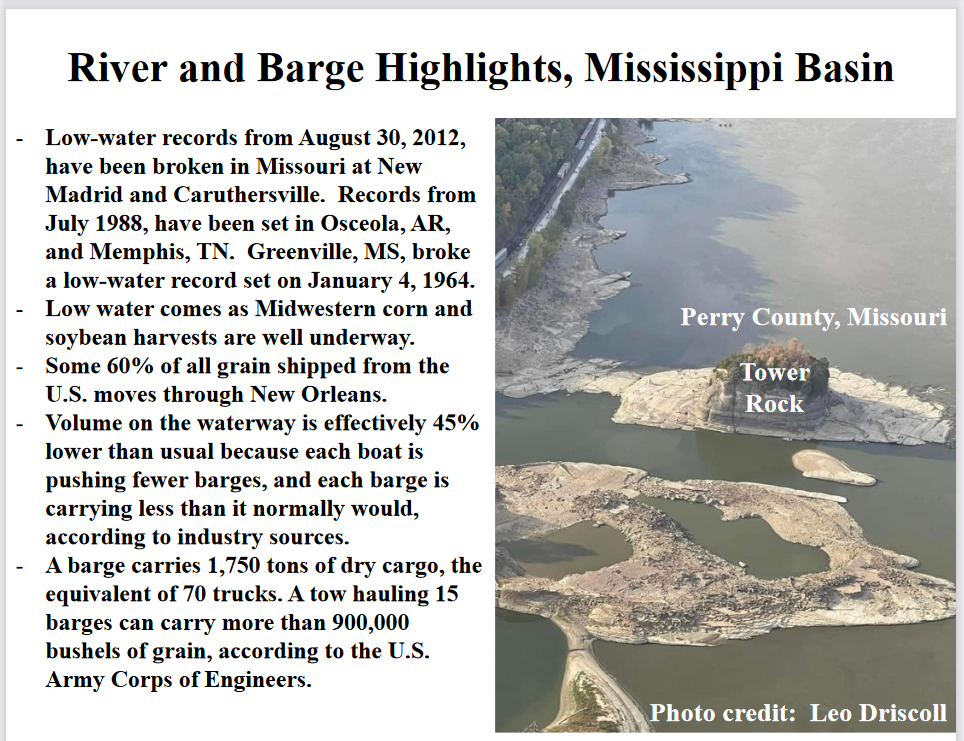
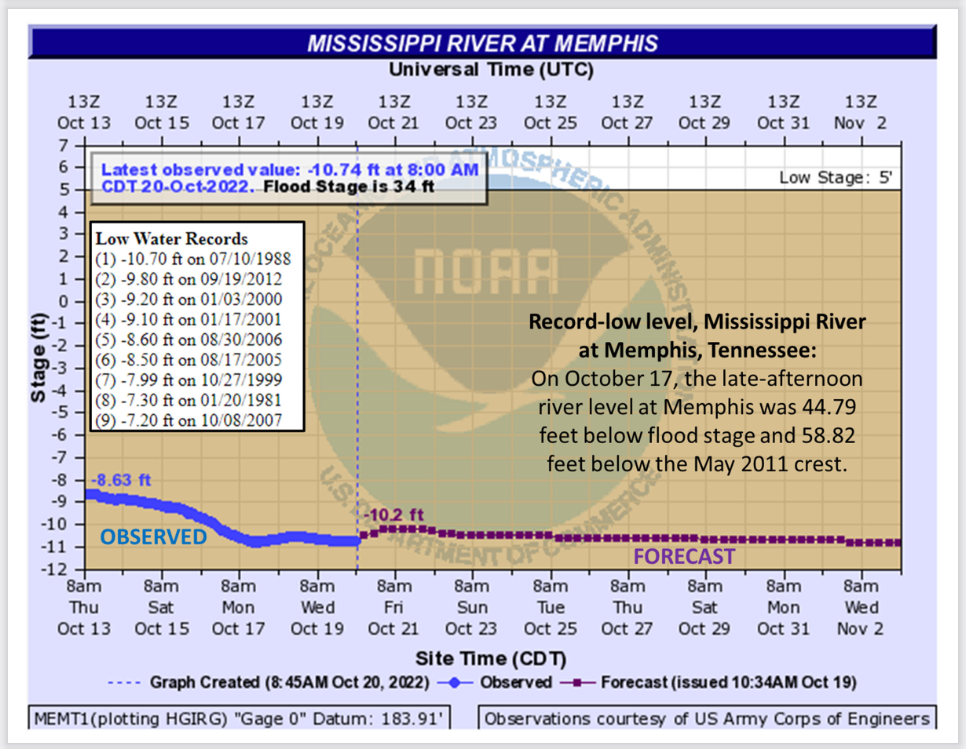
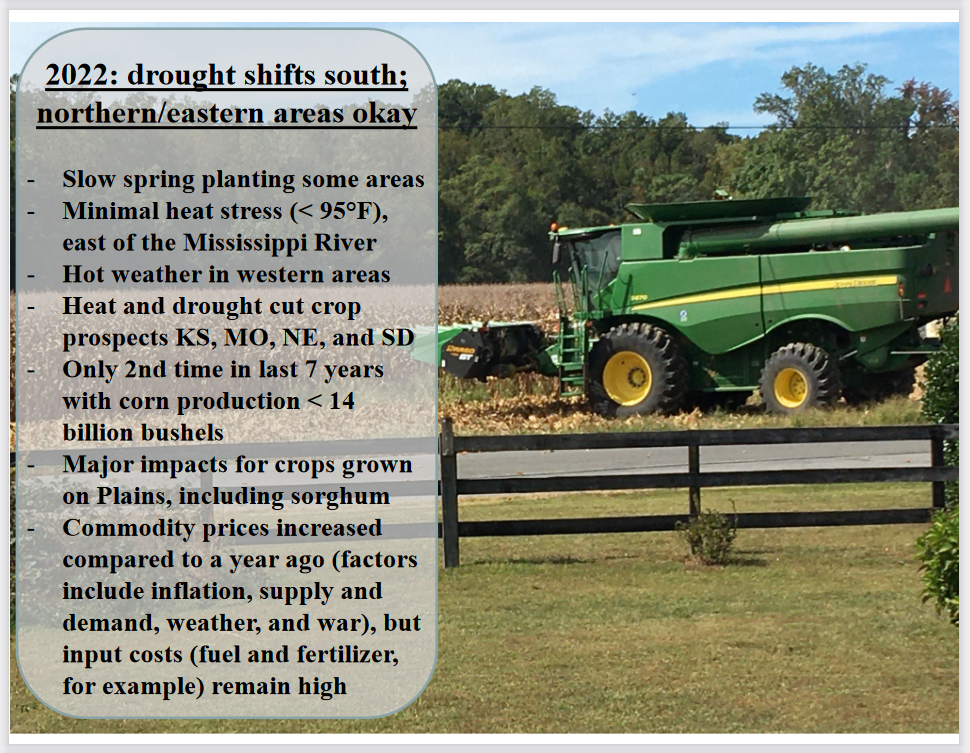
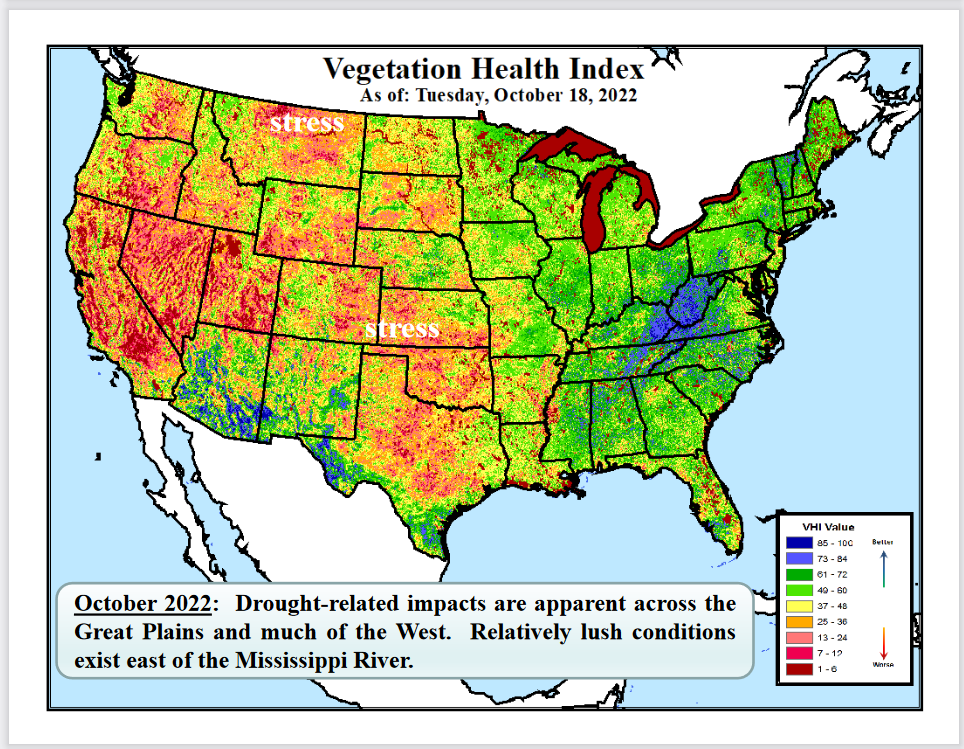
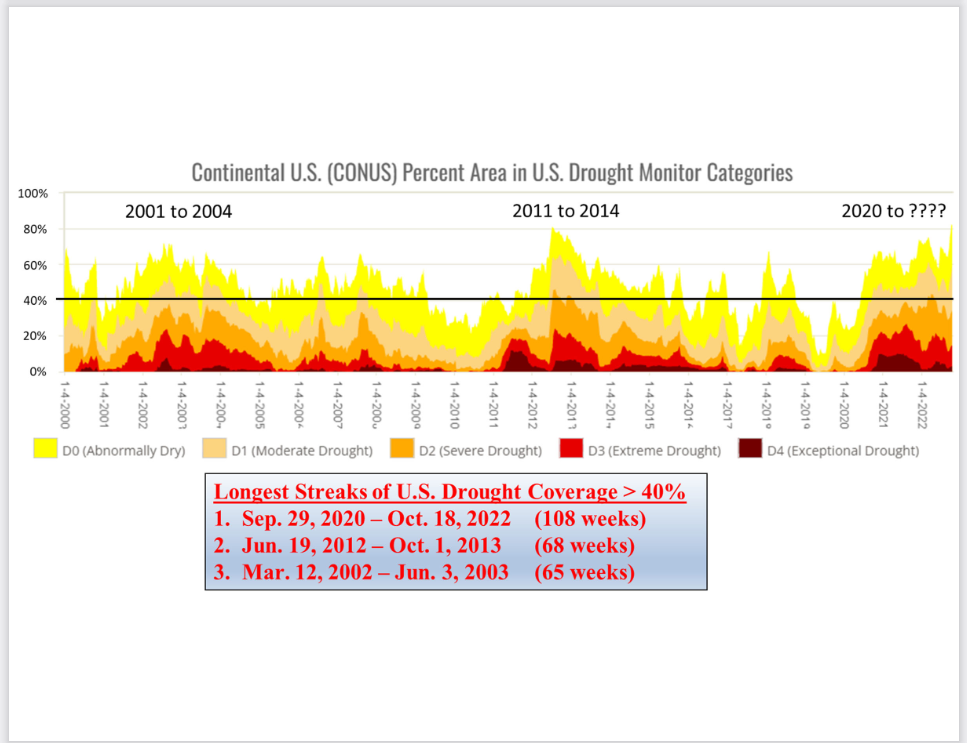
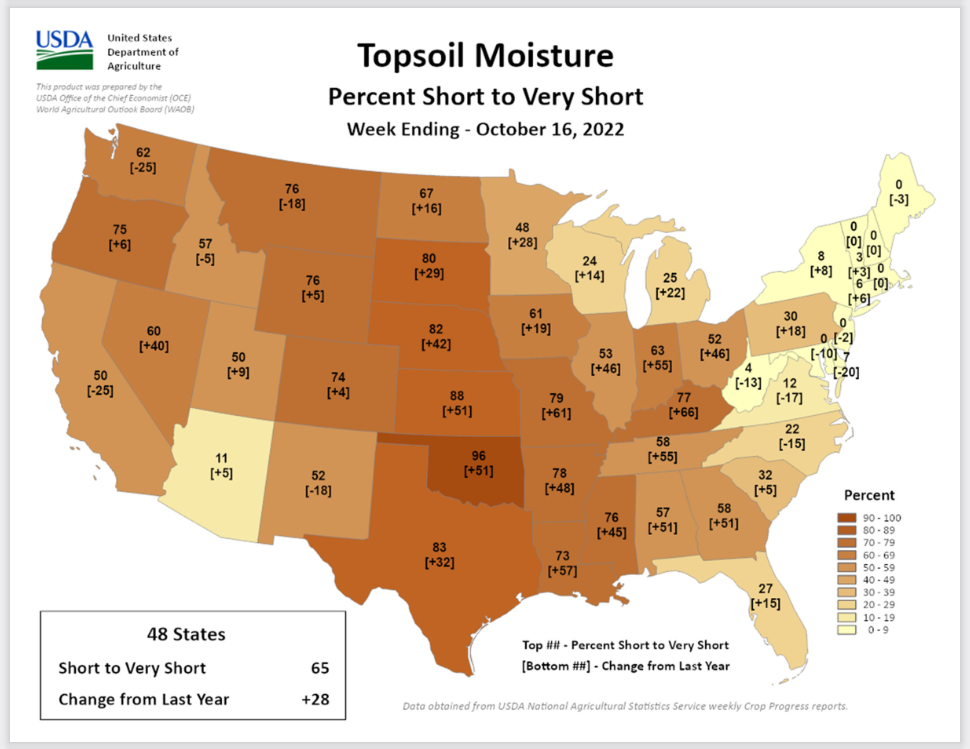
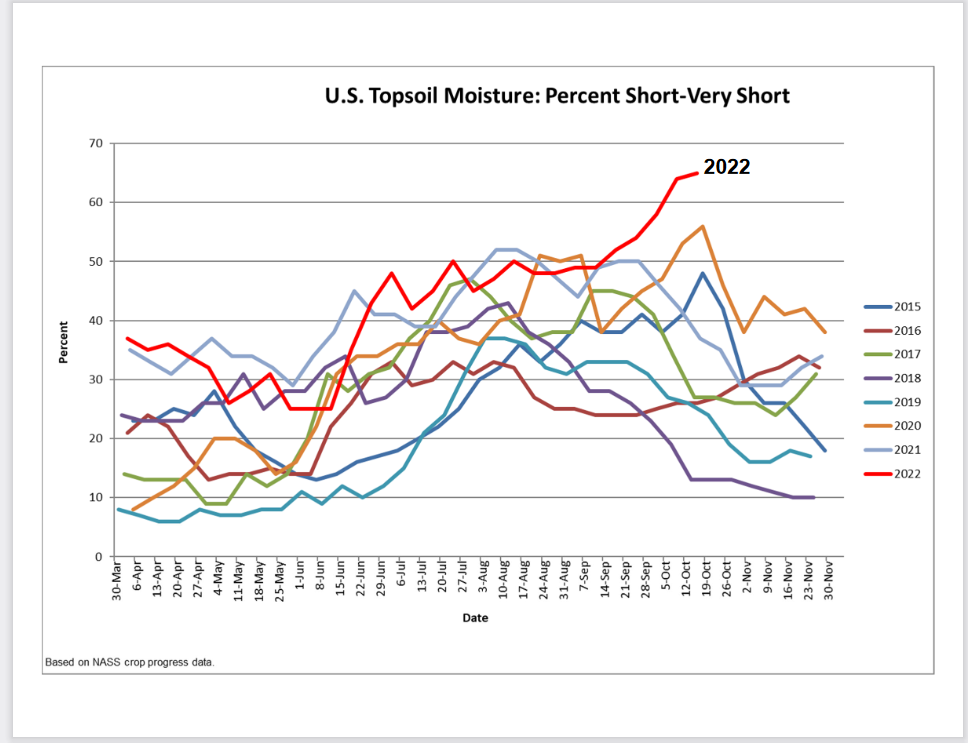
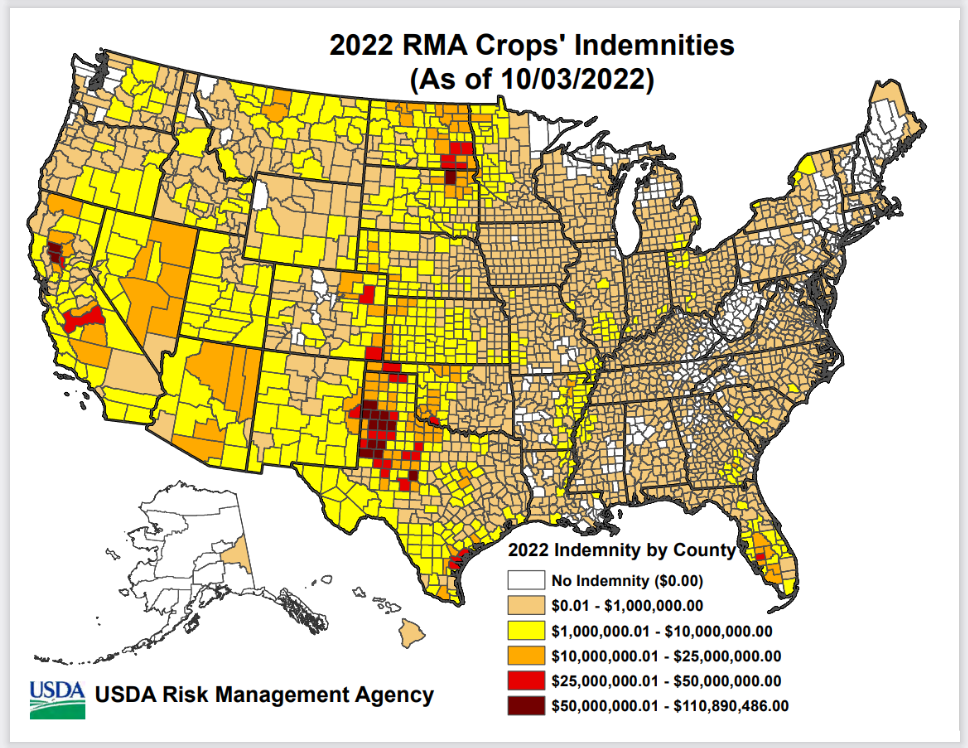
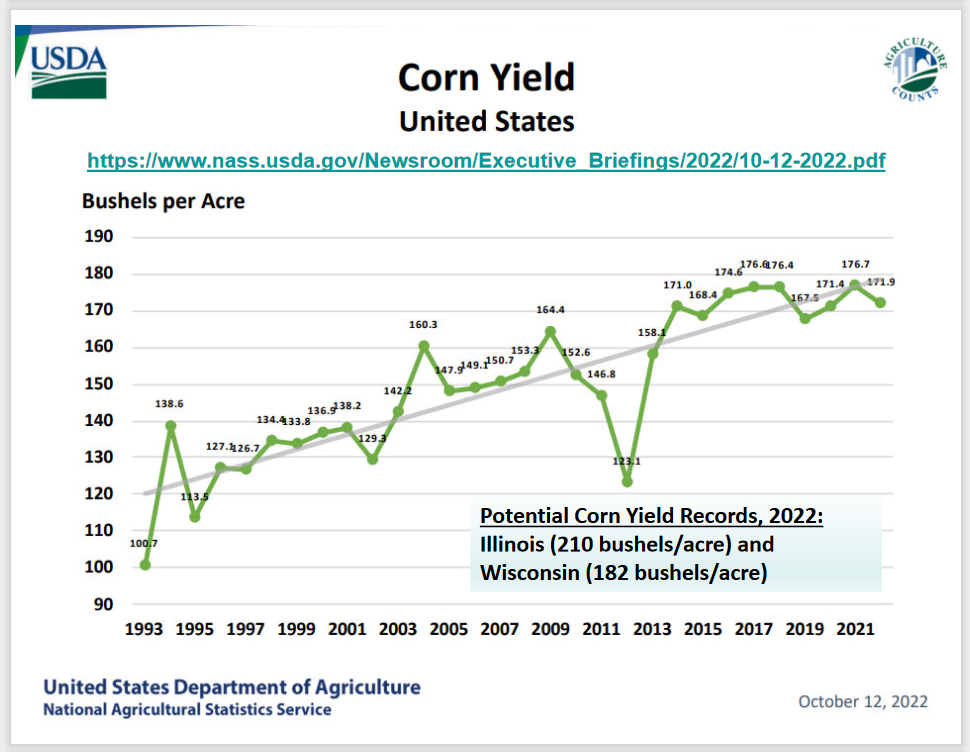


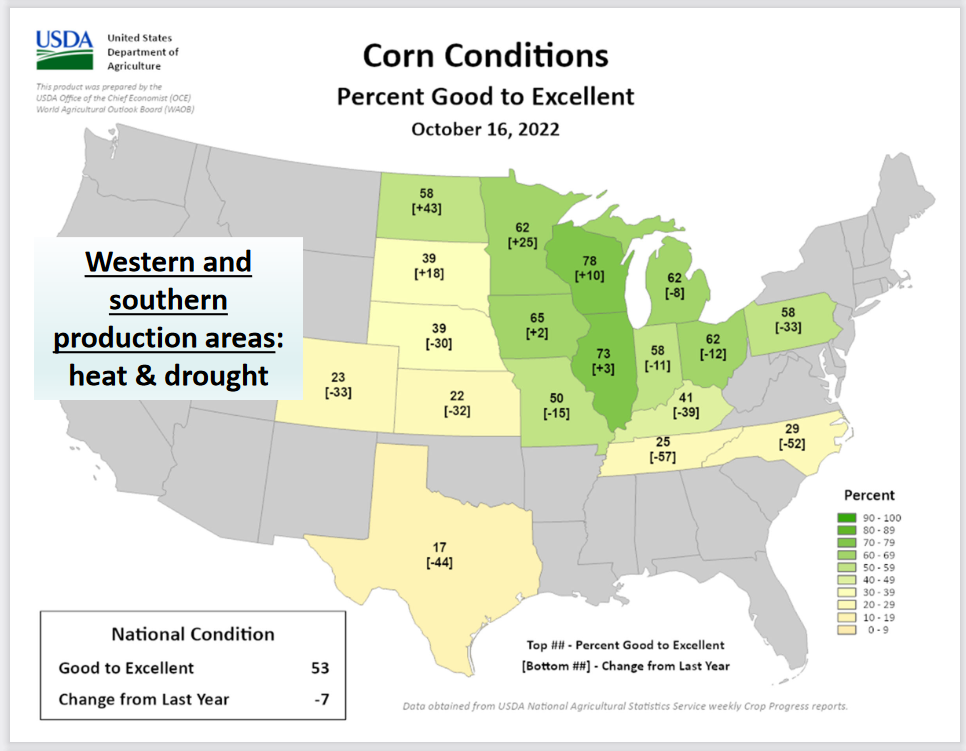
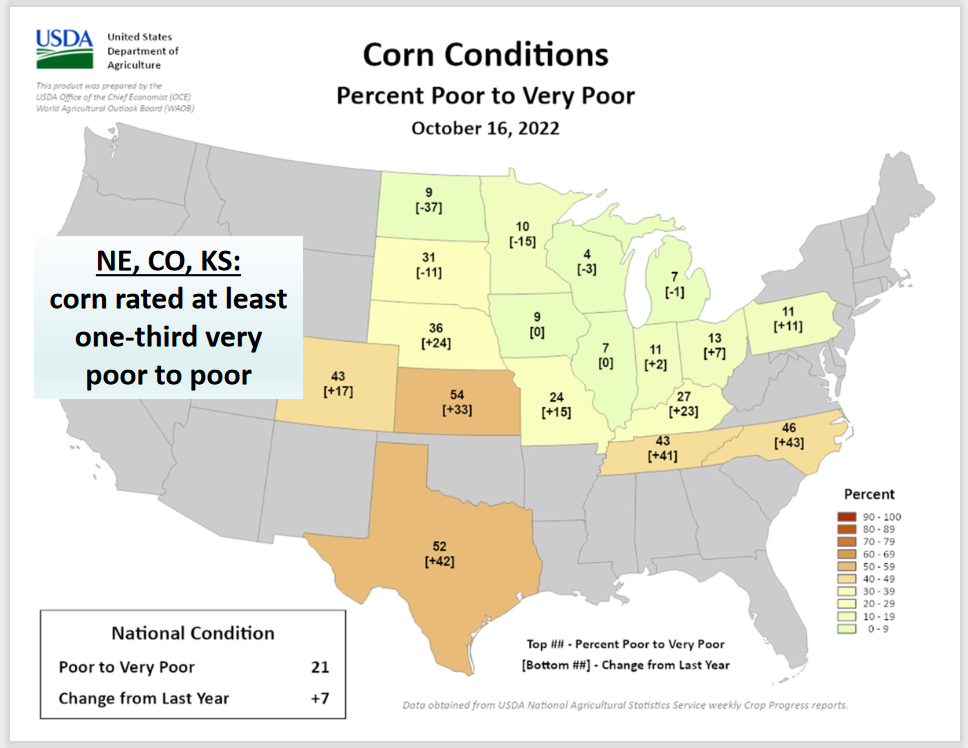
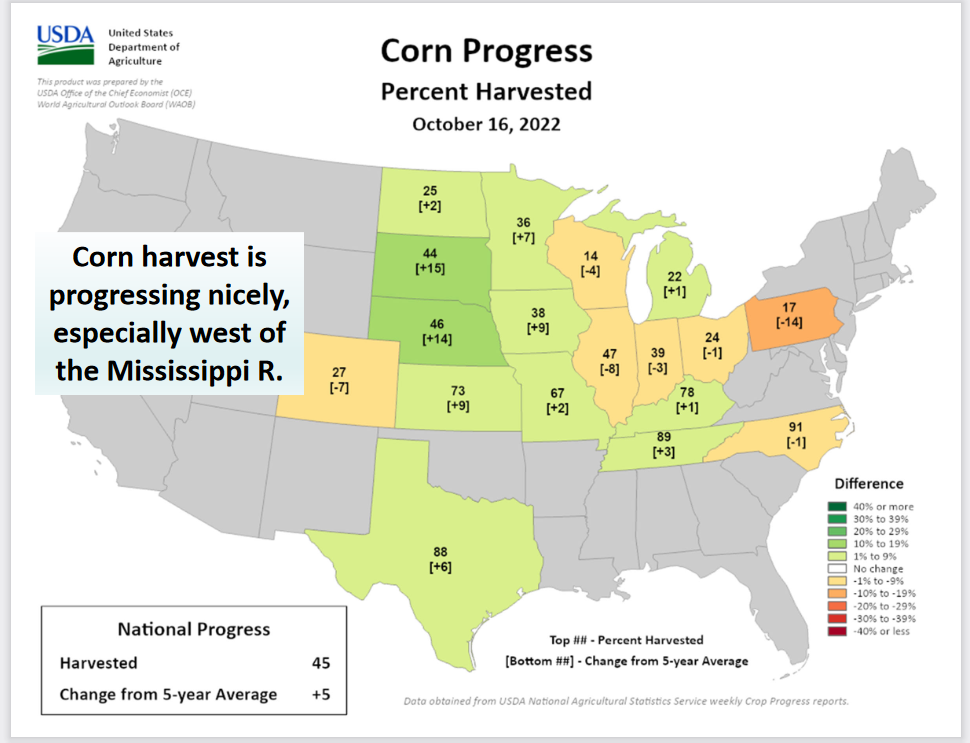
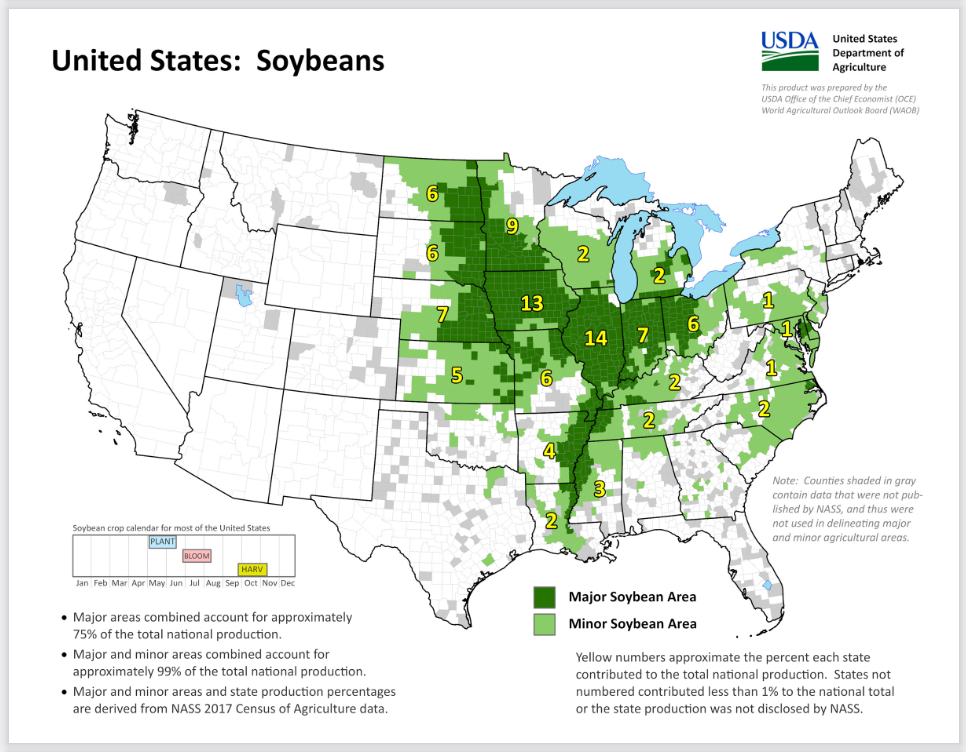
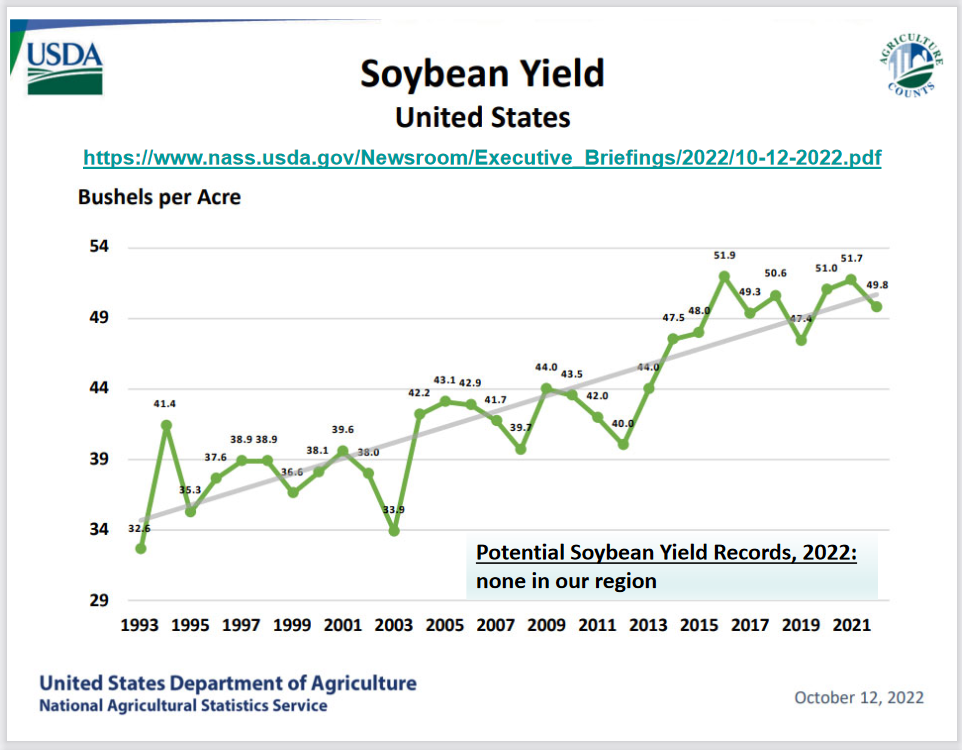
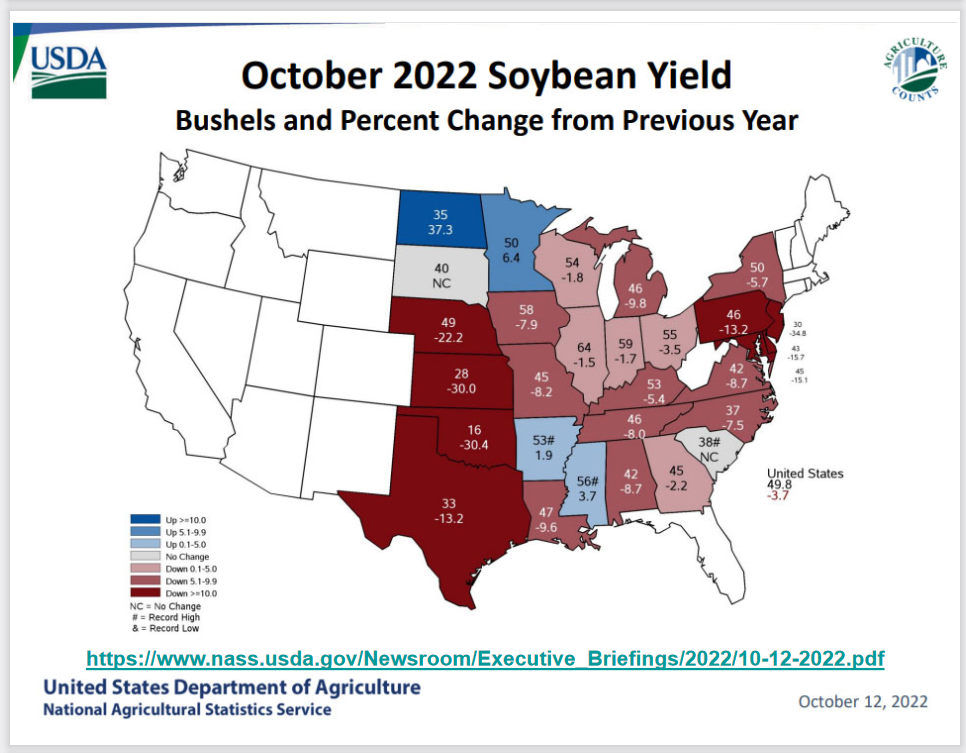

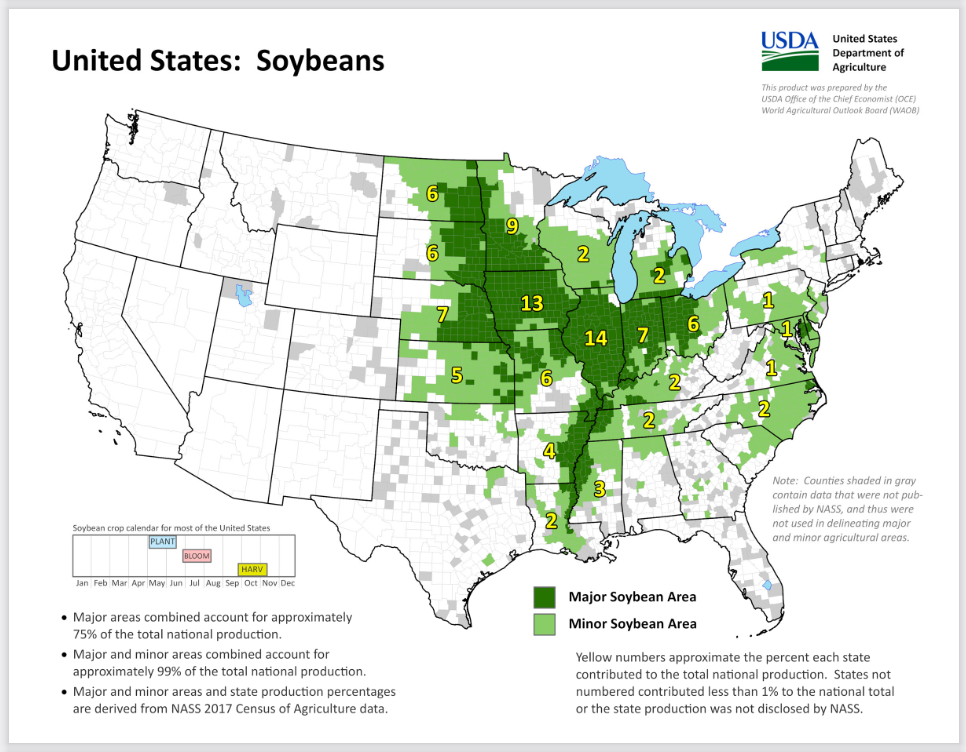
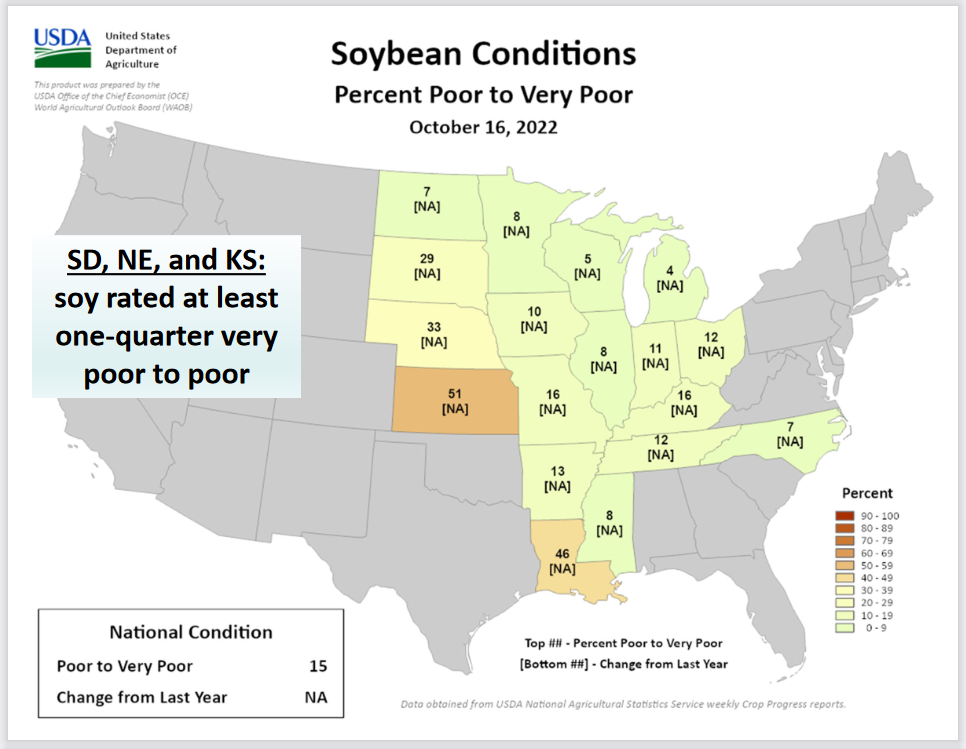
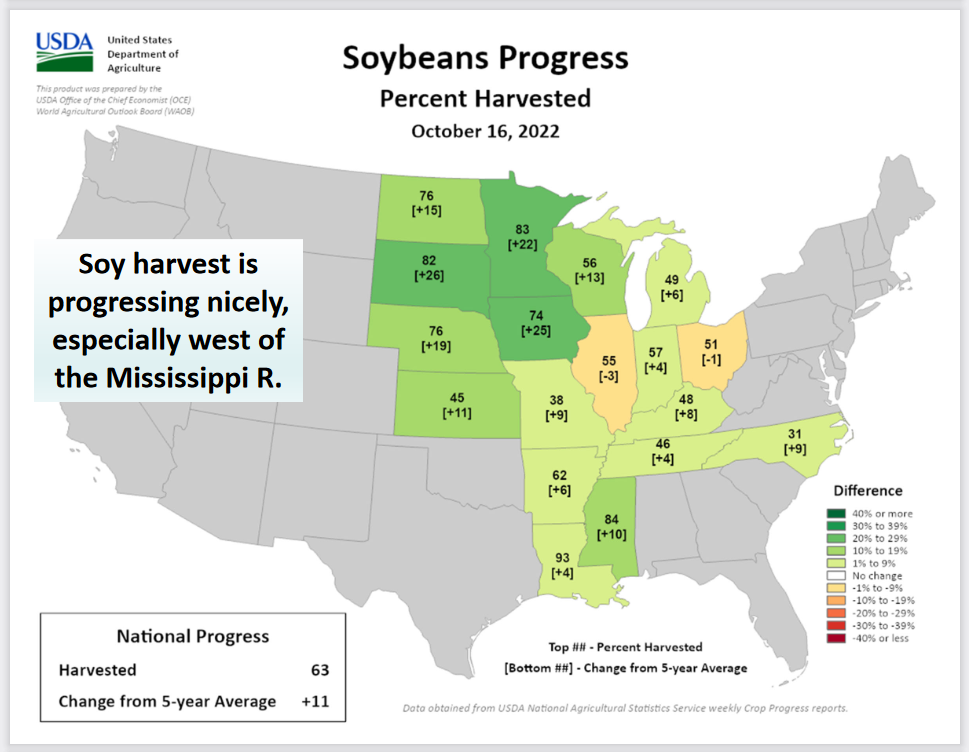
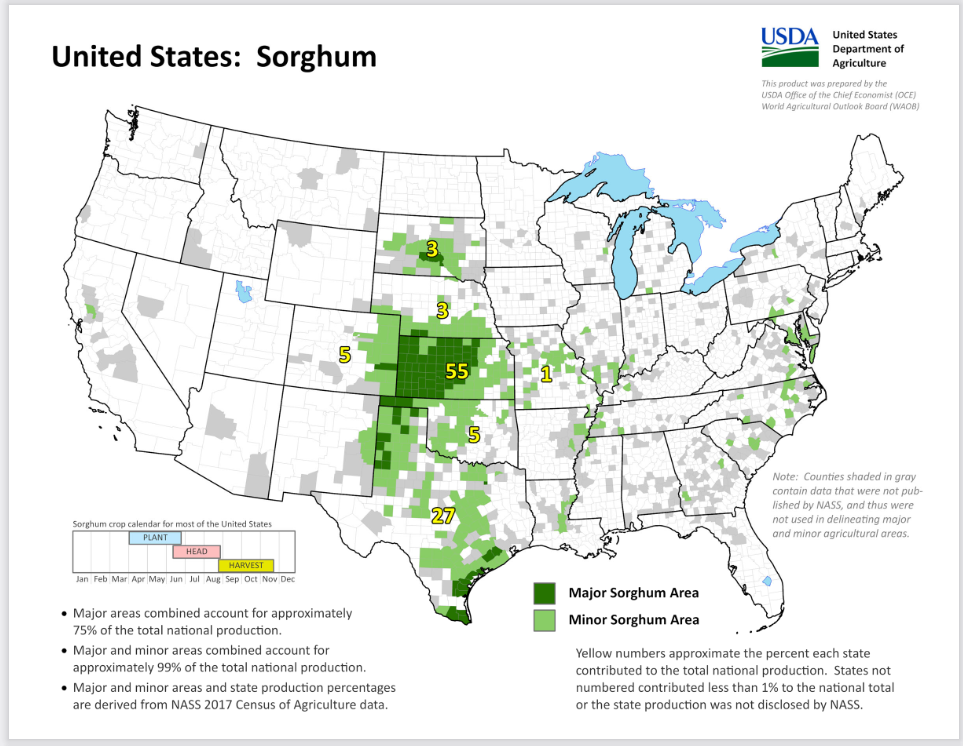
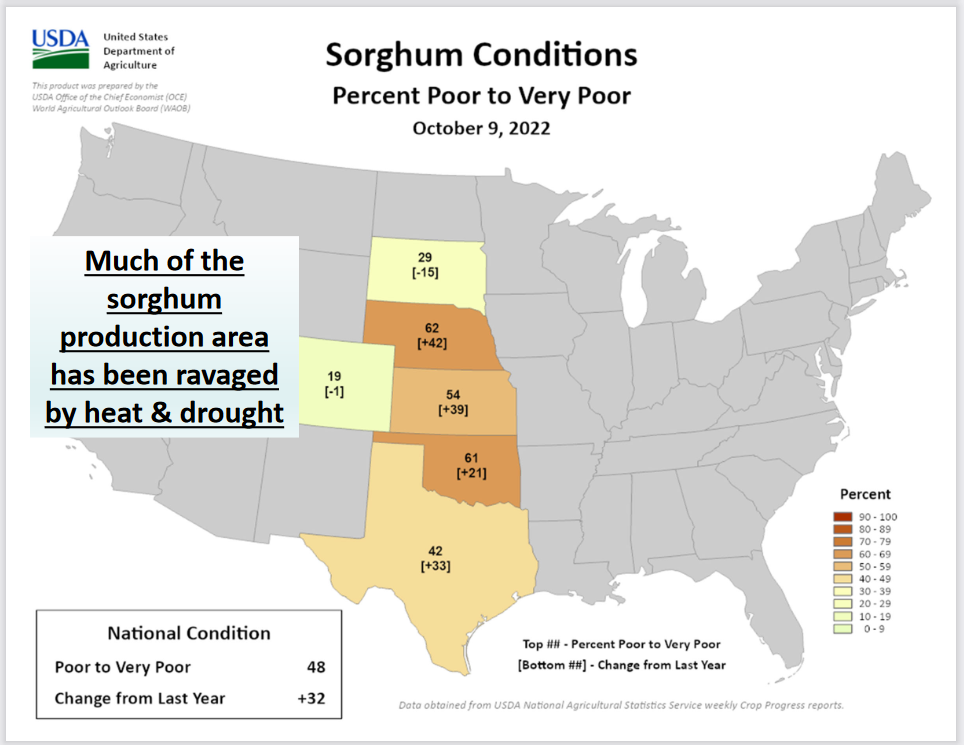
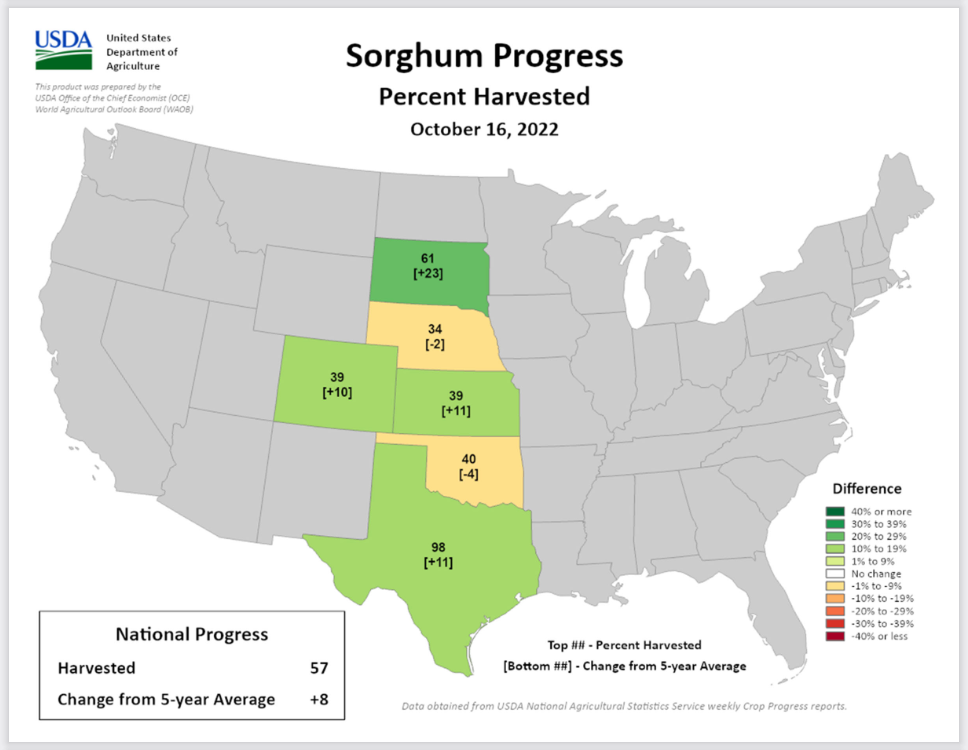
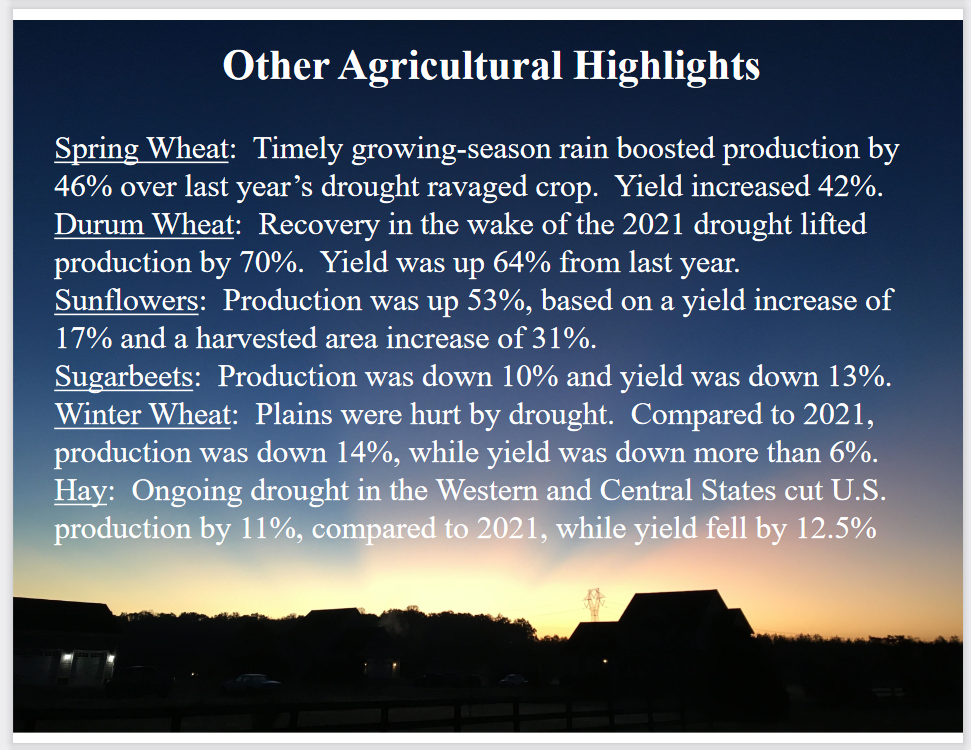
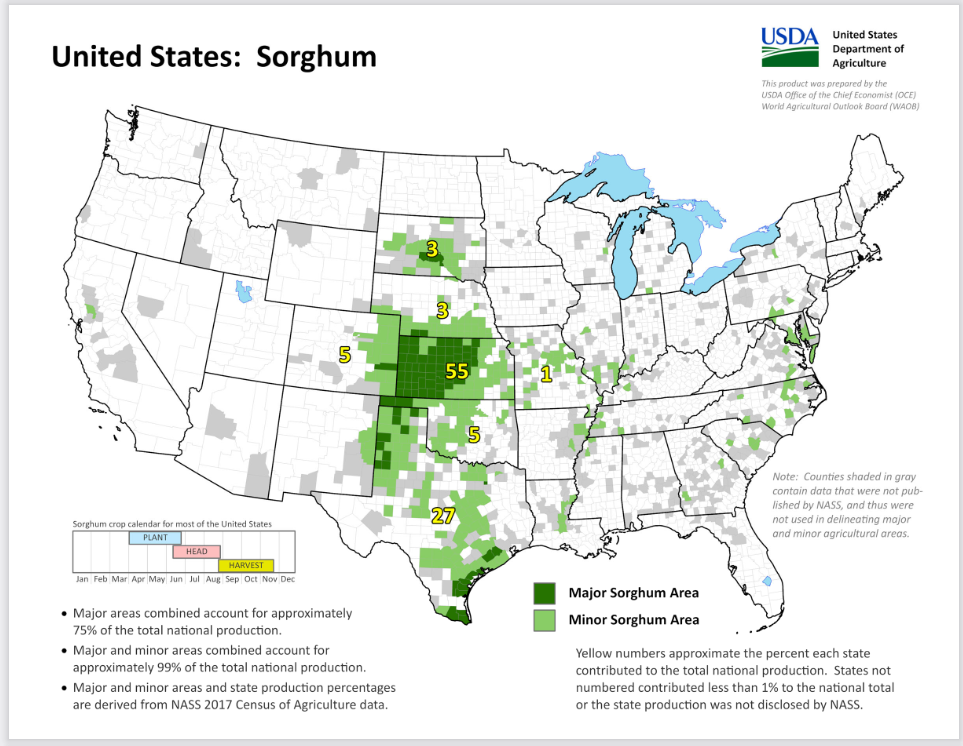

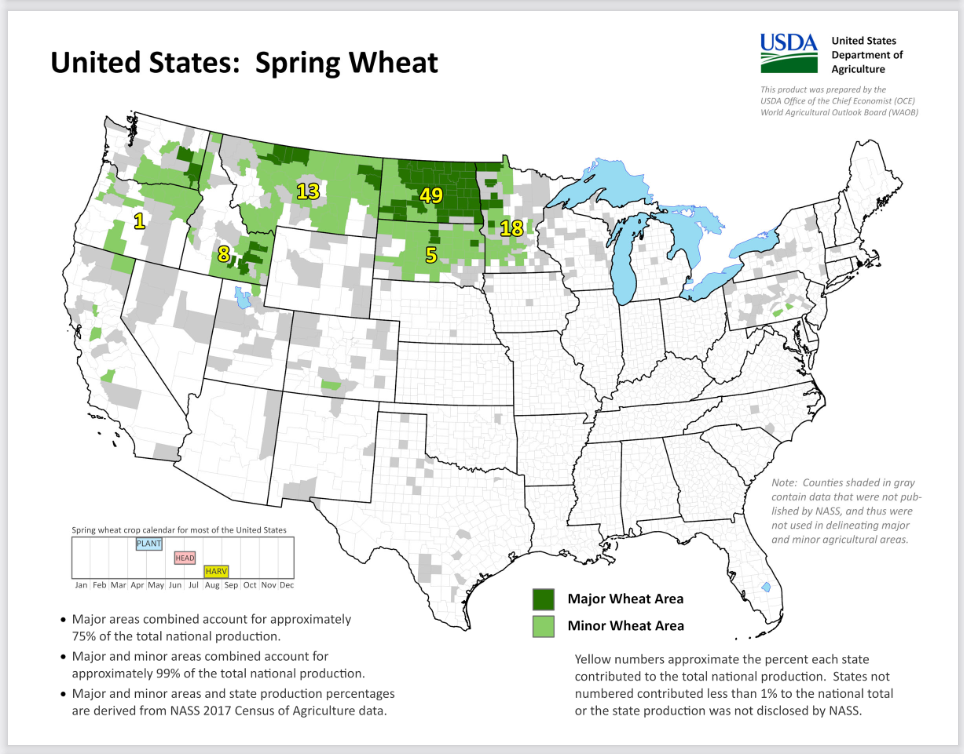

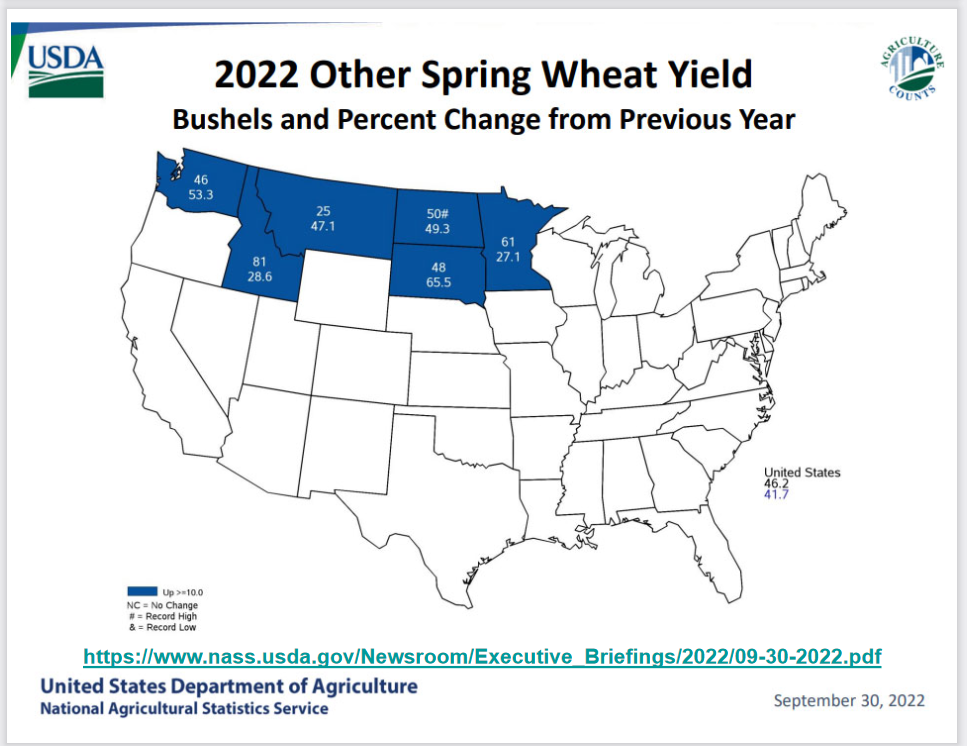
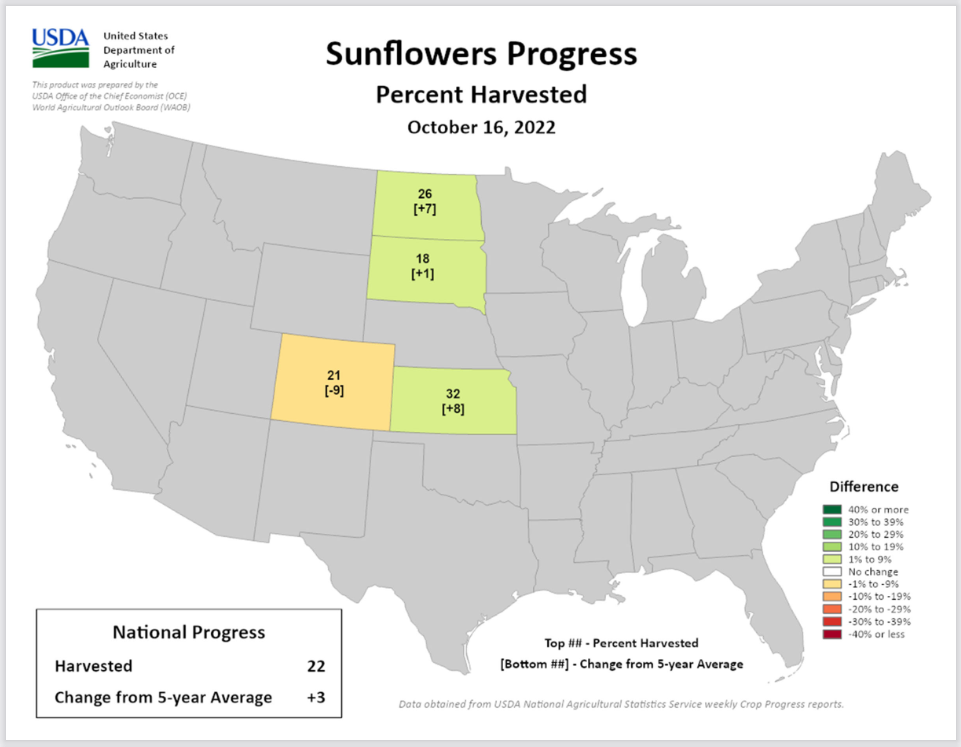
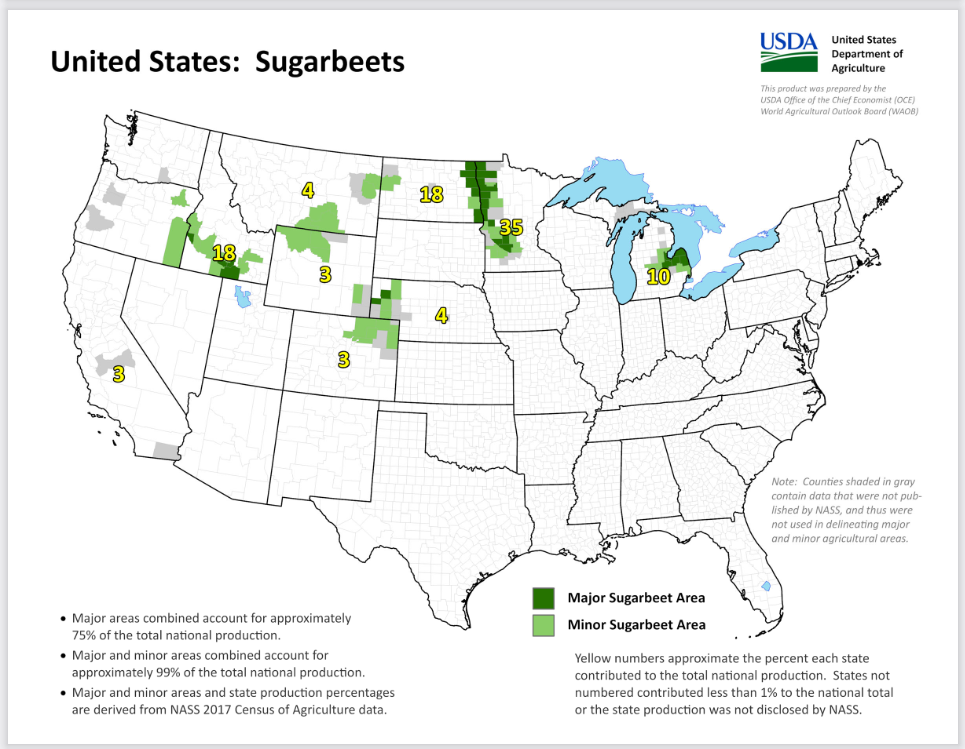
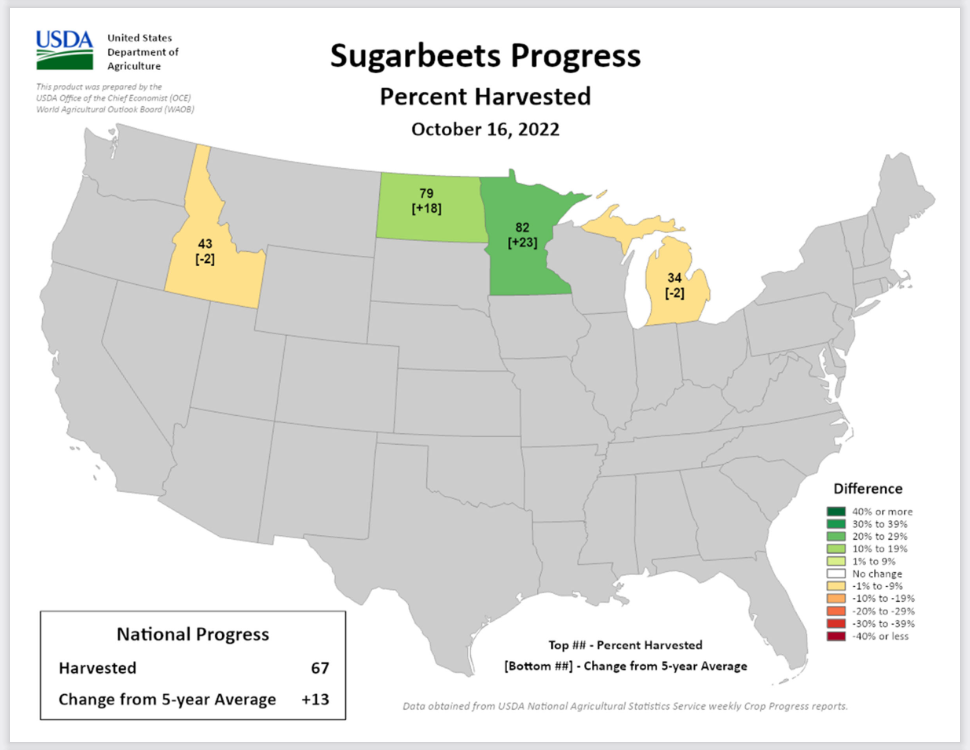
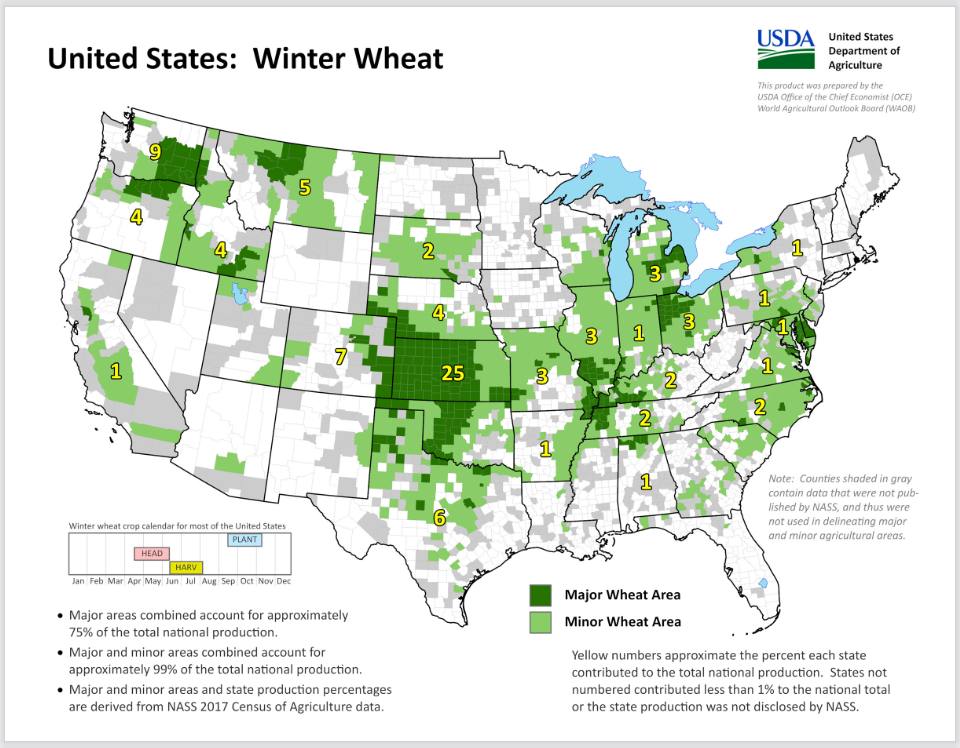
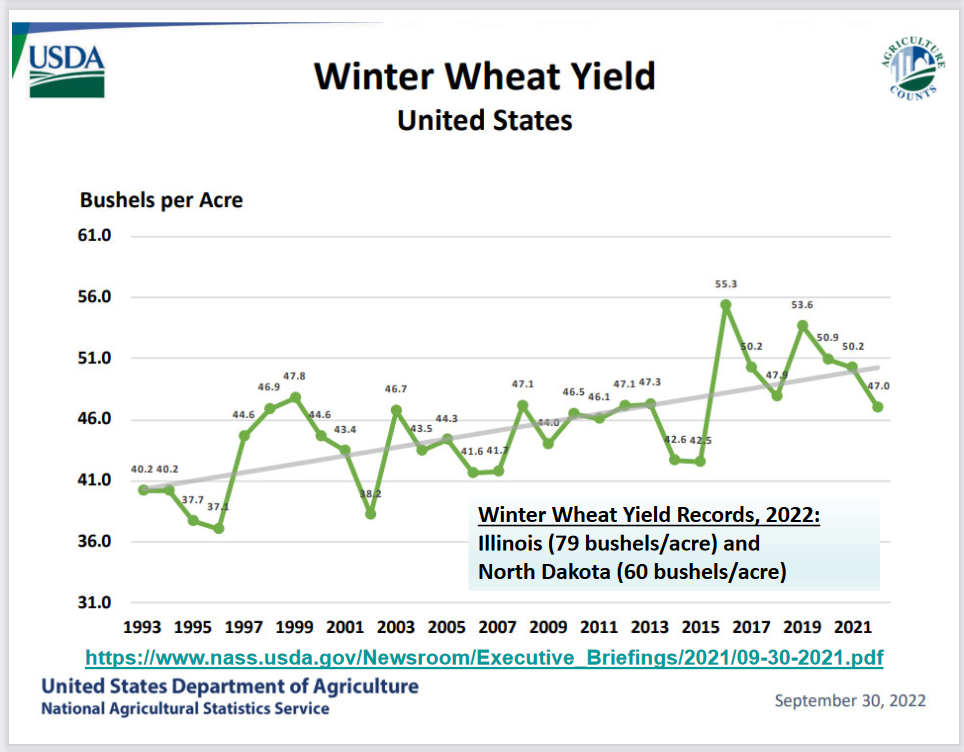
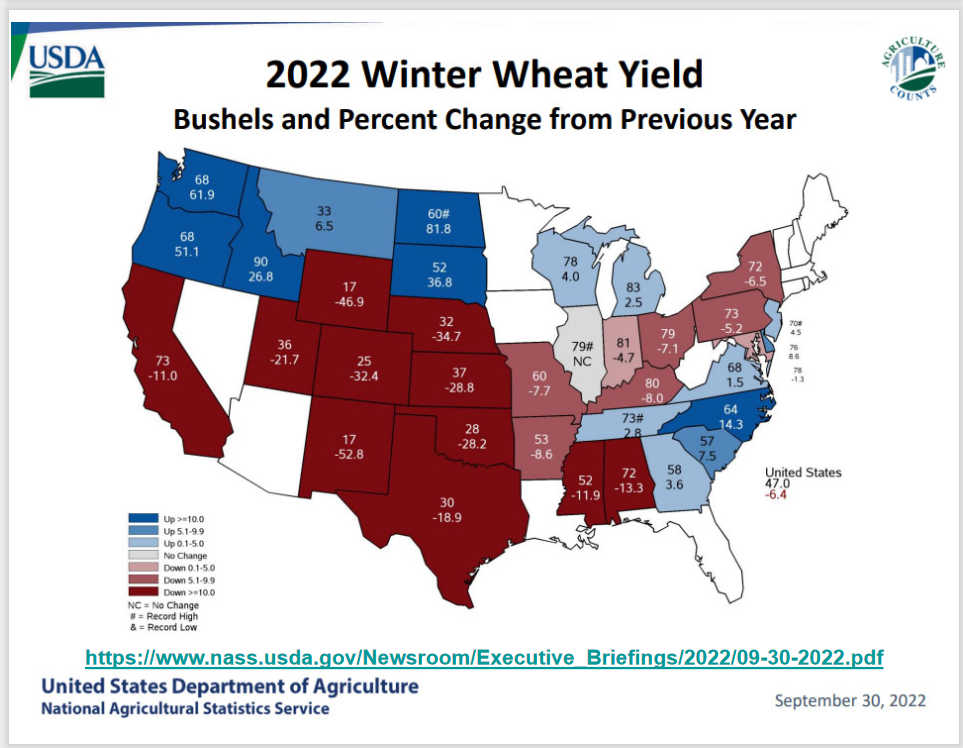
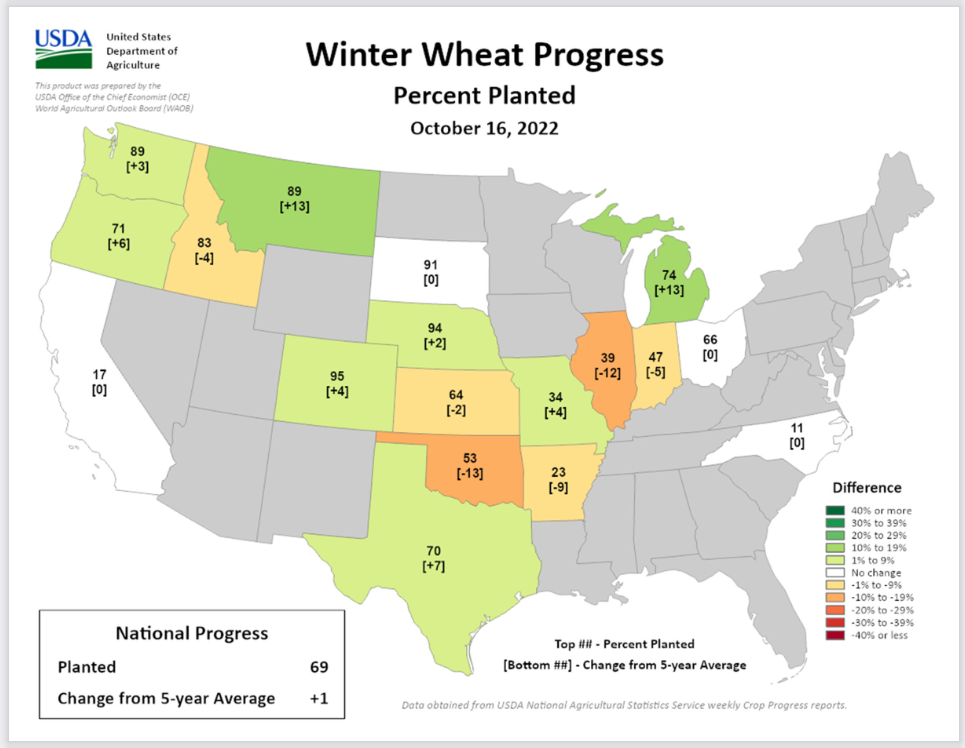
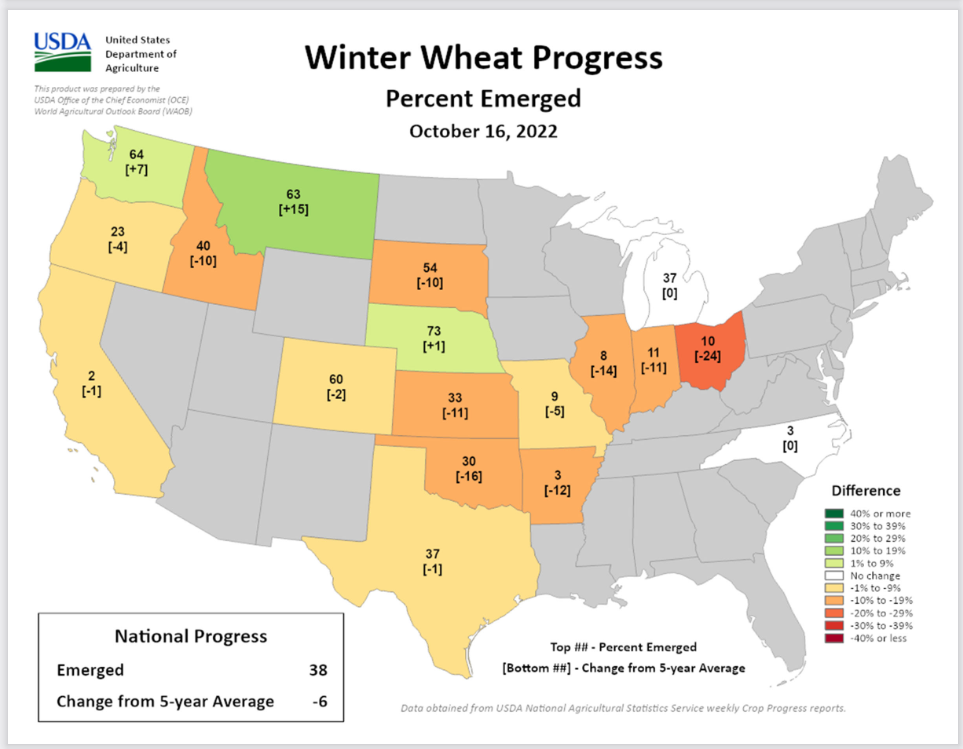
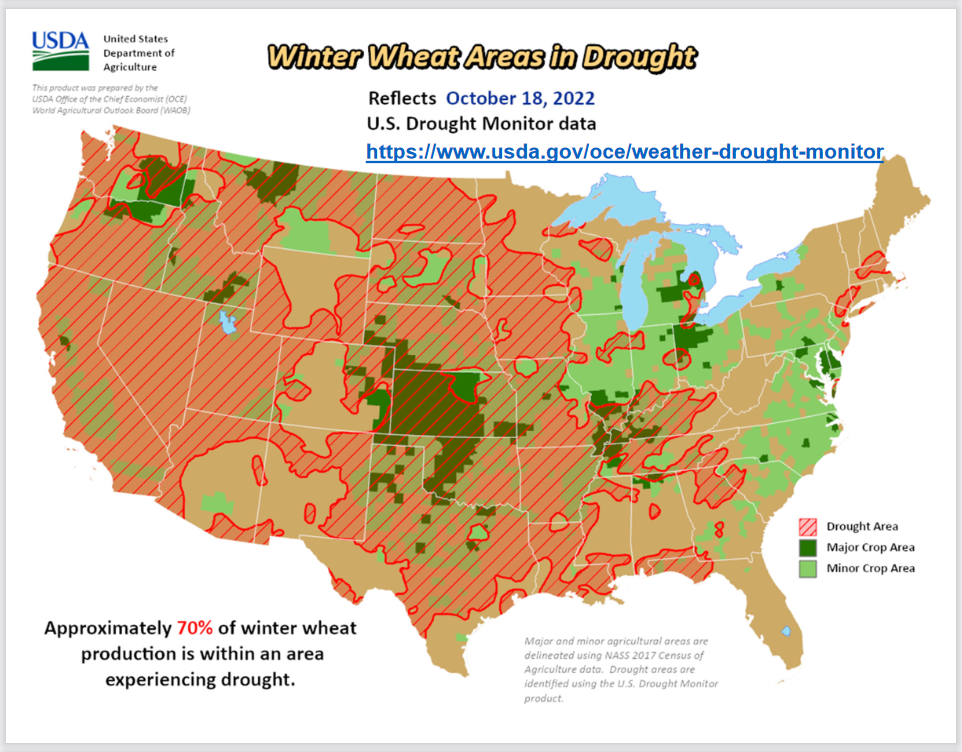
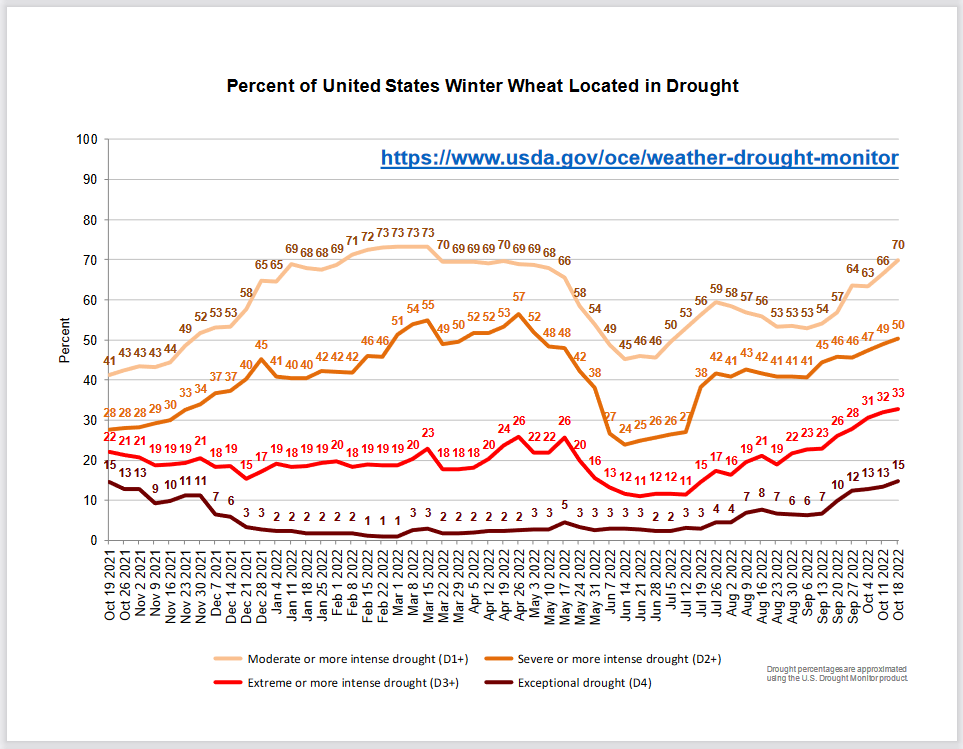
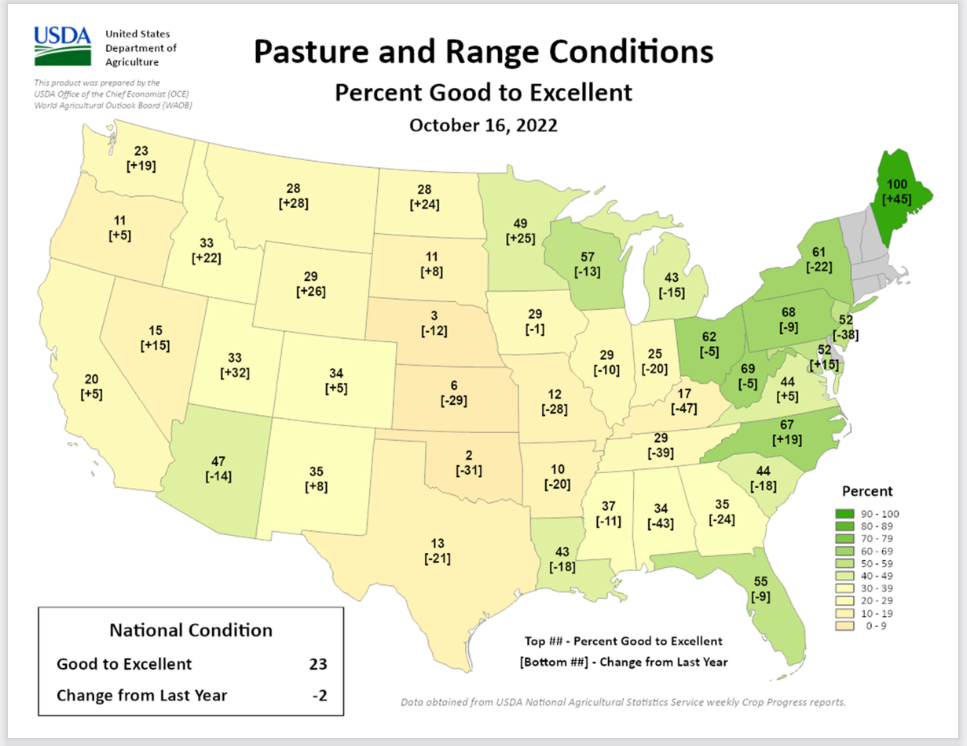
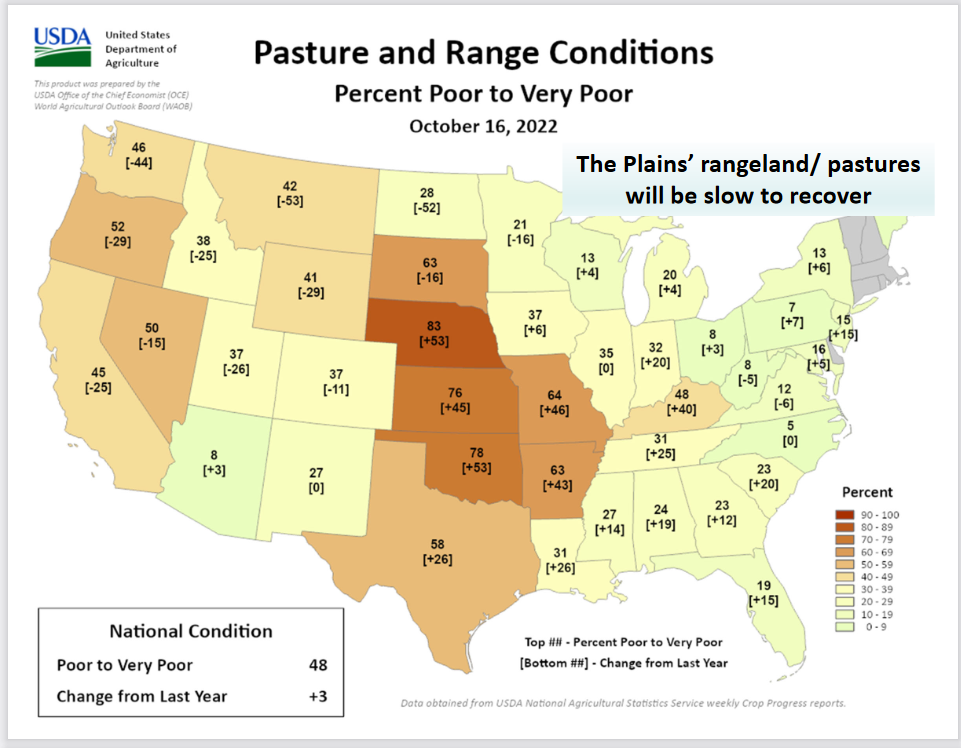
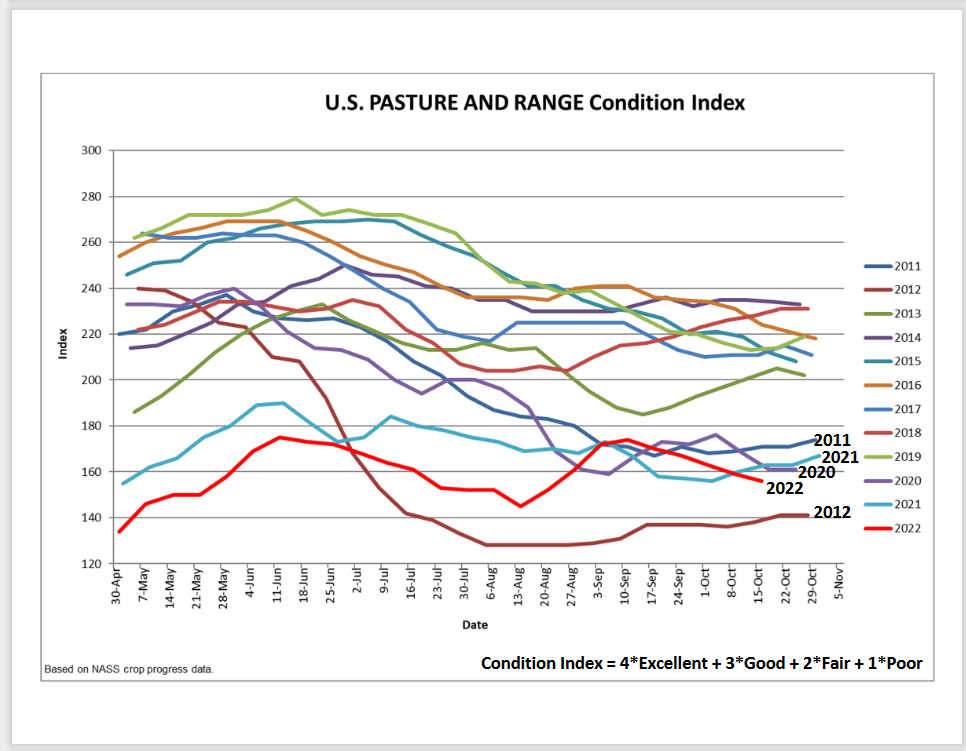

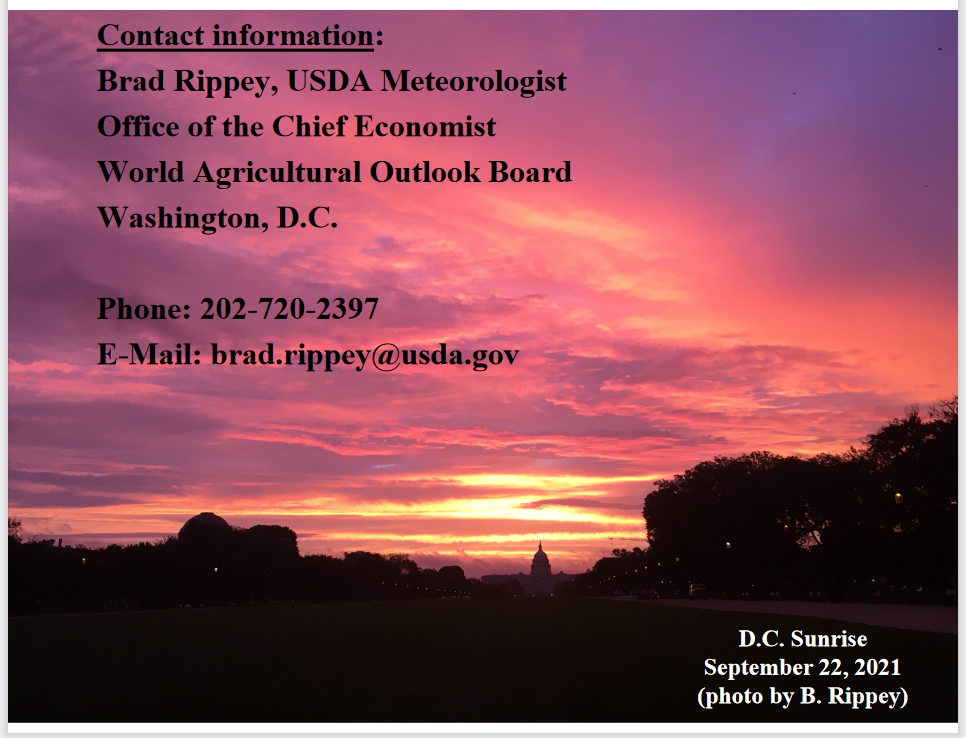
Thank you, Sig, for the kind words. You’re correct in saying my focus is near-term risk, but there are broader questions about the future. Perhaps in 10 or 20 years, we’ll know if this “topping of the yield trend” is a short-term feature or a long-term concern.
I agree that it is very difficult to tell what is due to normal variations and known cycles such as ENSO, PDO and AMO versus increases in GHG but noticing things can guide research. I thought your discussion of short-term threats was extremely interesting I wish I would have had a way of capturing and presenting more of that. The discussion on corn was very very interesting. When we deal with short-term impacts we often are also dealing with long-term impacts so it is all good. Thanks again for providing me the information.